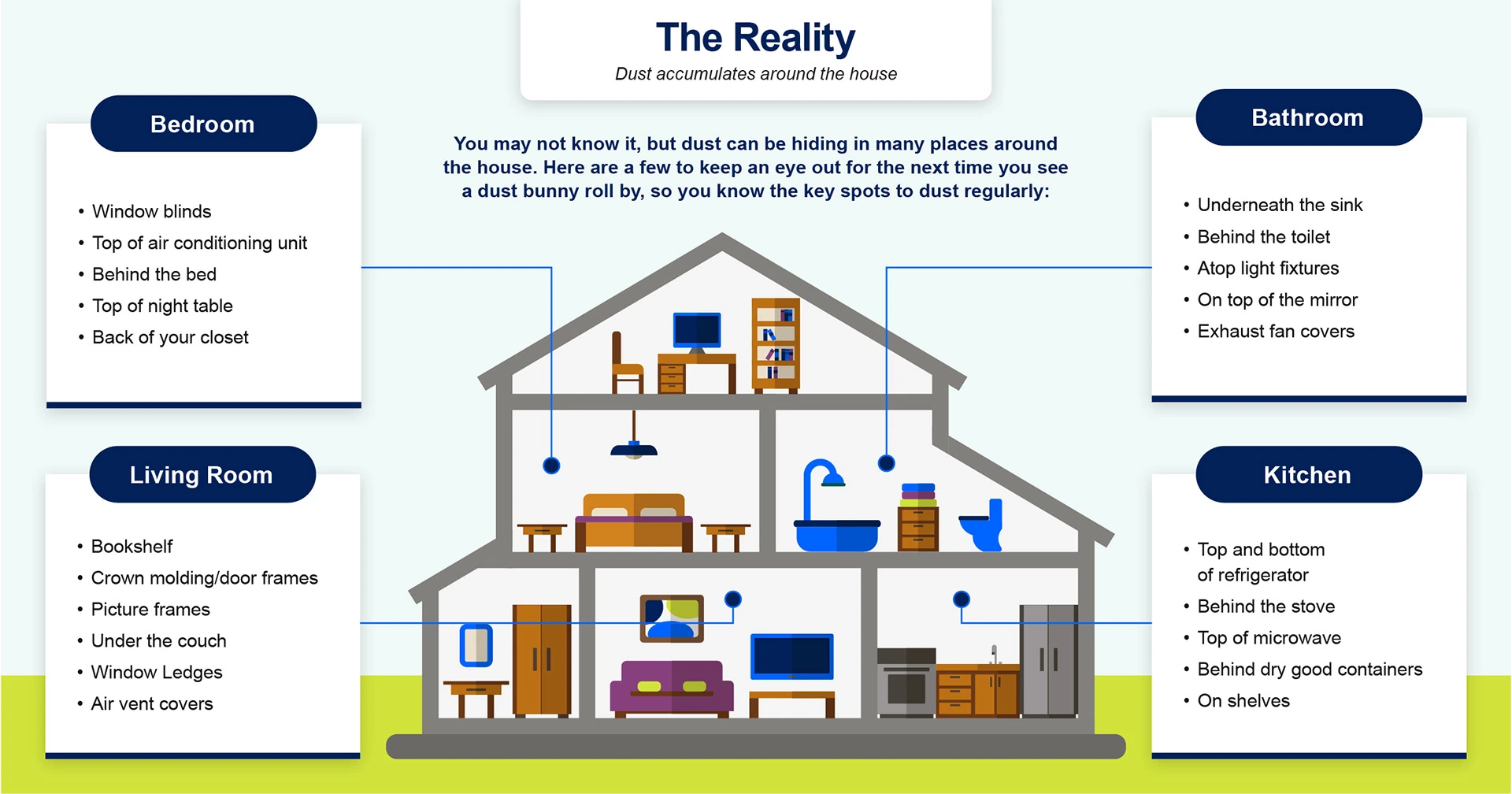"We often talk about outdoor air quality and resulting allergies, but most people don’t usually discuss the quality of the air in your home. The American Lung Association has partnered with Swiffer to inform Americans about why they should be aware of the quantity of dust in their homes, and how a regular dusting regimen is key to achieving better indoor air quality. This briefing shines a spotlight on what we know – and don’t know – about the dust in our homes and explains the connection between dust and the air we breathe at home, while providing information and resources to empower readers to take action within their own homes. We hope that you’ll find this briefing informative and instructive as a means to improve the quality of life of you and your family on an everyday basis."

What dust is made of and why you should do something about it
Many people don’t realize that dust is made up of dead skin cells, dust mite droppings and dust mite body fragments. With dead skin cells acting as a key component of dust, increased time spent indoors may actually contribute to an increase of dust in your home. As dust accumulates, it becomes more visible to the naked eye, but that doesn’t mean it hasn’t been there the entire time.
Here are some other facts that you may not know about dust’s presence in your home:
- Many Americans spend up to 90% of their time indoors, often at home. Therefore, having clean air is important for when you spend time at home.
- Animal dander, dust mite matter and pollen can promote poor indoor air quality, can travel through the air and are often invisible.
- Dust mites are microscopic, insect-like pests that generate dust.
- Dust mites are nearly everywhere; roughly four out of five homes in the United States have detectable levels of dust mite allergen in at least one bed.
- Dust mites feed on dead human skin cells that are found in dust. Because human skin flakes tend to accumulate in mattresses, pillows, carpets, upholstered furniture, blankets, clothes, stuffed toys and other fabric-covered items, those are the places dust mites tend to live.
- Hundreds of thousands of dust mites can live in bedding, mattresses, upholstered furniture, carpets or curtains in your home.
- An average person sheds 1.5 grams of skin flakes every day, which may not seem like a lot, but that's enough to feed a million dust mites.
- Dust mites’ body parts and droppings are considered one of the major indoor triggers for people with allergies and asthma.
Millennials aren't prioritizing dusting in their cleaning routines
The facts don't lie—dust is gross.
Yet data from a Harris Poll survey reveals that Americans of all ages do not consider dusting to be a priority—66% of Gen Z (ages 18-24), 63% of Gen X (ages 41-56), and 73% of Boomers (ages 57-75). While Millennials (ages 25-40) are similarly as guilty as other generations of this cleaning sin, the clues just don't add up.
- We know wellness is very important to Millennials as a demographic…
- 80% of Millennials regularly participate in activities that help them maintain good wellness, like exercising or eating healthy
- ...and that cleaning plays an important role in Millennials’ wellness practices.
- 84% of Millennials believe having a clean home plays a central role in their everyday wellness
- 82% of Millennials say having a messy home makes them feel anxious, significantly higher than Gen Z (66%) or Boomers (69%)
- We know that Millennials’ cleaning practices have shifted during the pandemic…
- Millennials are sanitizing (76%), vacuuming (61%), and mopping (59%) more than before the pandemic, suggesting a widespread move towards cleanliness
- …and that the vast majority of Millennials know that dust affects indoor air quality...
- 80% of Millennials know that the amount of dust a person is exposed to can impact their overall wellness, and 62% believe indoor air quality is negatively impacted when people spend more time at home
- …yet many Millennials just aren’t dusting their homes regularly.
- Only 38% of Millennials consider dusting to be a priority
Where dust accumulates around the house
Why dusting is key to achieving better indoor air quality
The American Lung Association recommends incorporating dusting into your regular cleaning routine, which can reduce the amount of dust and improve overall indoor air quality in your home. It only takes a few minutes out of your day to effectively dust a space.
Use a damp mop, damp cloth or duster that can trap and lock dust to reduce the amount that is stirred up when cleaning. Locate the areas around your home that accumulate dust frequently, such as baseboards, molding, blinds and shelves.
Dusting doesn’t have to feel like another chore to be added – create a fun, light 15-minute playlist, and you can de-dust the whole house.
Although the COVID-19 pandemic increases the need to dust at home due to more time indoors, it is important to continue regular dusting practices upon a return to “normalcy.”
Choosing the Right Dusting Tool
Swiffer is honored to be a Proud Partner of the American Lung Association in support of its initiatives to improve indoor air quality. The Lung Association recommends regular dusting and recognizes the innovation and the research that Swiffer puts into developing high performance dusting tools*.
Created in partnership with
*The American Lung Association does not endorse any product, device or service.






